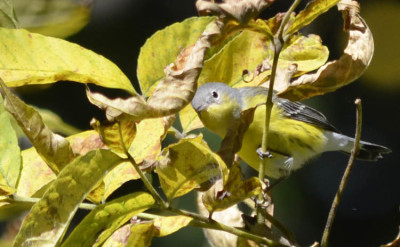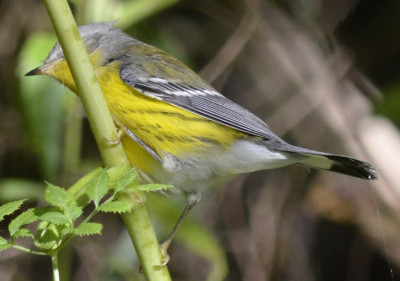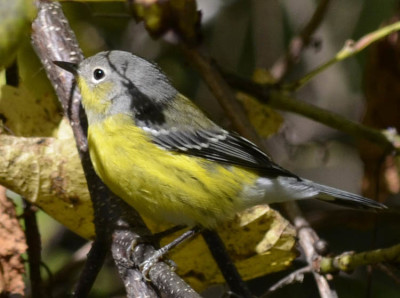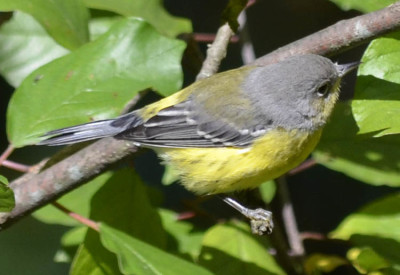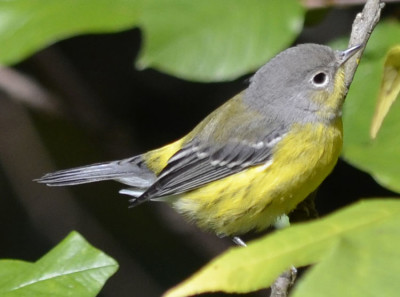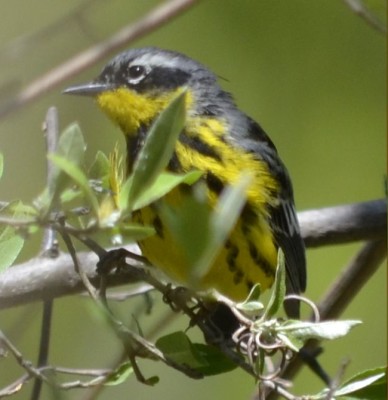Magnolia Warblers are colourful and common. I enjoyed the company of a flock of them while they hunted caterpillars and crane flies amongst the goldenrod and asters at the Rattray Marsh the first week in October. Here are some photos to show their fall plumage.
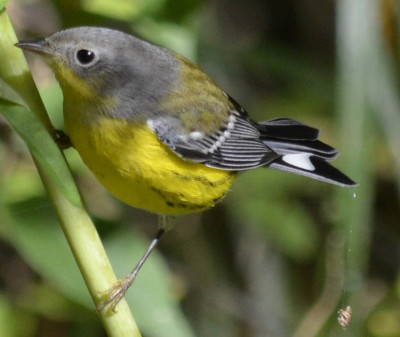
The white and black tail markings make it easy to identify Magnolias–if you can see the tail!
A Truly Canadian Bird, At Least in Summer
According to Environment Canada, our country hosts over 95% of the global breeding population of this cheerful bird so “Canada’s responsibility for Magnolia Warbler is very high.” Fortunately so far the birds are doing well.
At first yellow seems like a bad colour for camoflage: but not in autumn leaves!
Where Do Magnolias Migrate To?
Look for the pure white from the legs back underneath.
There’s an interesting map on the Environment Canada website showing where some of the banded birds have been found again. Some appear to have merely moved into the USA. Others have gone as far south as the Caribbean and Central America.
Notice the grey “necklace” on this bird.
Several sites mention one reason for this birds relative success is that it will use a wide variety of habitats. On the Cornell University website, they say when wintering the birds will occupy most landscape types in winter, except open fields, and at elevations from sea level to 1,500 metres up. That lack of specialization can be very important as humans change the landscape to suit our needs.
Fall Magnolias have a greenish back behind their grey cap.
Bye for Now, See You in the Spring!
Note the fine white eye ring.
It was lovely seeing this flock of Magnolias the first week in October but now they’ve moved through. With luck, though, I’ll see some of them again in the spring. They look a little different then:
Spring Magnolia.
Related Reading
Join In
Have you seen some Magnolias, maybe even in your blossoming Magnolia? Please share your experiences with a comment.

